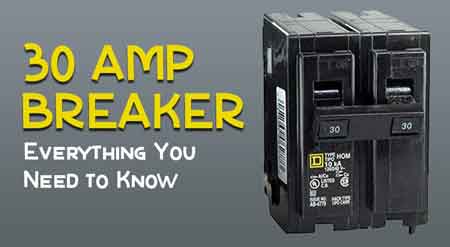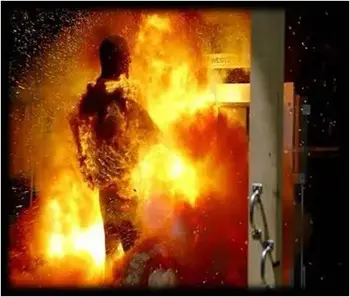What Size Fuse to Use for a 30-Amp Continuous Load Explained

Substation Relay Protection Training
Our customized live online or in‑person group training can be delivered to your staff at your location.

- Live Online
- 12 hours Instructor-led
- Group Training Available
Download Our OSHA 4474 Fact Sheet – Establishing Boundaries Around Arc Flash Hazards

- Understand the difference between arc flash and electric shock boundaries
- Learn who may cross each boundary and under what conditions
- Apply voltage-based rules for safer approach distances
A 30-amp continuous electrical load requires a fuse rated at 125% of the load current, or 37.5 amps, rounded to the next standard size—typically a 40-amp fuse. This ensures safe circuit protection and compliance with NEC standards.
What Size Fuse to Use for a 30-Amp Continuous Load?
Basic Protection Relay Training
Request a Free Training Quotation
Determining What Size Fuse to Use for a 30 Amp Continuous Load
A 30-amp continuous electrical load requires a fuse rated at 125 percent of its steady current—37.5 amps—rounded to the next standard size, typically 40 amps. This ensures proper circuit protection, electrical safety, and full compliance with the National Electrical Code (NEC). Fuse sizing for continuous-duty circuits is more than arithmetic; it requires understanding current flow, conductor ampacity, heat dissipation, and the relationship between overcurrent protection and equipment safety.
NEC Requirements for Overcurrent Protection
Fuses act as overcurrent protective devices that interrupt excessive current before conductors or equipment can overheat. Under NEC Articles 210.20 and 240.3, fuses or breakers protecting continuous loads must be rated at least 125 percent of the load current. When the calculated value, such as 37.5 amps, does not match a standard size, NEC 240.6 permits rounding up to the next higher rating—40 amps—if the conductor and connected equipment remain within safe limits. This “next higher rating” clause ensures safety without unnecessary oversizing.
Continuous Load Rule and Thermal Margin
Continuous loads—defined as operating for three hours or more—generate steady heat in both conductors and protective devices. A fuse rated exactly at 30 amps might trip during normal operation, particularly in warm environments or long runs where resistance causes heat buildup. The 125 percent rule provides the thermal margin required for stable, reliable performance. For example, an air-conditioning unit drawing 30 amps continuously would risk overheating on a 30 A fuse; using a 40 A fuse ensures continuous operation while still protecting the circuit from overloads.
Electricity Today T&D Magazine Subscribe for FREE

- Timely insights from industry experts
- Practical solutions T&D engineers
- Free access to every issue
Selecting the Correct Fuse Type and Interrupting Rating
Fuse type must match the application. Time-delay (slow-blow) fuses are ideal for continuous-duty circuits like motors, compressors, and HVAC systems because they can handle short inrush surges during startup. Fast-acting fuses open immediately and are suitable for stable electronic loads where the current remains constant.
Another critical parameter is the interrupting rating (AIC)—the highest fault current the fuse can safely interrupt. NEC 110.9 requires that a fuse’s interrupting rating exceed the available fault current at the installation point. Underrated fuses may fail catastrophically during a short-circuit event, endangering equipment and personnel.
Fuse Sizing Reference Table
| Continuous Load (A) | × 1.25 = Fuse Rating (A) | Next Standard Fuse Size (A) | Typical Wire Gauge (Copper) |
|---|---|---|---|
| 15 A | 18.75 A | 20 A | #12 AWG |
| 20 A | 25 A | 25 A | #12 AWG |
| 25 A | 31.25 A | 35 A | #10 AWG |
| 30 A | 37.5 A | 40 A | #10 AWG |
| 35 A | 43.75 A | 45 A | #8 AWG |
| 40 A | 50 A | 50 A | #8 AWG |
| 50 A | 62.5 A | 65 A | #6 AWG |
Conductor Ampacity and Wire Sizing
Overcurrent protection must align with conductor capacity. NEC 210.19 and 215 state that conductors supplying continuous loads must have ampacity at least 125 percent of the load current before applying temperature or derating factors. For a 30-amp continuous circuit, that equals 37.5 amps. A #10 AWG copper conductor is commonly used, but long runs, high ambient temperatures, or conduit grouping can require a heavier gauge—#8 AWG—to prevent voltage drop and excessive heating. Proper conductor sizing ensures that fuse and wire operate in balance, maintaining thermal stability and extending equipment life.
Mixed Continuous and Noncontinuous Loads
Many branch circuits serve both continuous and noncontinuous loads. The NEC directs designers to size the overcurrent device at 125 percent of the continuous load + 100 percent of the noncontinuous load. For example, a 30 A continuous heater and a 10 A noncontinuous fan together total 47.5 A, which calls for a 50 A fuse. This approach prevents undersized protection and reduces the likelihood of nuisance trips while keeping wiring within its ampacity limits.
100 Percent Rated Overcurrent Devices
Some breakers and fuses are listed for 100 percent continuous duty. These devices are tested to carry full rated current indefinitely without exceeding temperature limits. When using 100 percent-rated equipment, the 125 percent rule may be waived—but only if all components (conductors, terminals, insulation, and enclosures) are similarly rated. Manufacturers’ listings and installation instructions must always be verified before applying this exception.
Example: Applying the NEC Fuse Sizing Rule
Assume a heater draws 30 amps continuously. Multiply 30 × 1.25 = 37.5 amps, then select a 40 A fuse. Confirm that conductors are rated for at least 37.5 A ampacity, select a time-delay fuse if inrush current is present, and ensure the fuse’s interrupting rating meets or exceeds the available fault current at the panel. The result is a safe, code-compliant circuit designed for sustained operation.
Ensuring Code Compliance and Long-Term Reliability
Determining what size fuse to use for a 30 amp continuous load means applying NEC rules precisely, matching fuse and conductor ratings, accounting for temperature and run length, and choosing a fuse type suitable for the load’s characteristics. When these factors align, the result is a circuit that operates safely, efficiently, and in full compliance with NEC and UL standards.
Proper fuse sizing not only protects equipment but also minimizes downtime, prevents nuisance trips, and extends the lifespan of components. By understanding the principles behind the 125 percent rule and continuous-load management, electrical professionals can design systems that deliver both reliability and long-term safety.
Frequently Asked Questions
How do I calculate fuse size for a 30-amp continuous load?
Apply the NEC 125% rule. Multiply 30 A × 1.25 = 37.5 A, then round up to the next standard size—typically a 40 A fuse. This ensures safe operation and compliance with NEC branch-circuit protection requirements.
Why must the fuse rating exceed the load rating?
Continuous loads generate sustained heat. A fuse rated exactly at 30 A can overheat and trip during normal operation. Using a 40 A fuse provides thermal margin and prevents nuisance tripping while maintaining protection.
What fuse type is best for continuous-duty applications?
Time-delay (slow-blow) fuses are ideal for air conditioners, motors, and compressors because they tolerate short inrush surges. Fast-acting fuses are suitable for stable electronic or lighting circuits with minimal current variation.
FREE EF Electrical Training Catalog
Download our FREE Electrical Training Catalog and explore a full range of expert-led electrical training courses.

- Live online and in-person courses available
- Real-time instruction with Q&A from industry experts
- Flexible scheduling for your convenience
What wire size should be used for a 30-amp circuit?
NEC 210.20 requires overcurrent devices rated at least 125% of the load, and the conductors must match. A #10 AWG copper wire is typical, but long runs or high temperatures may require #8 AWG to prevent voltage drop and overheating.
Related Articles







